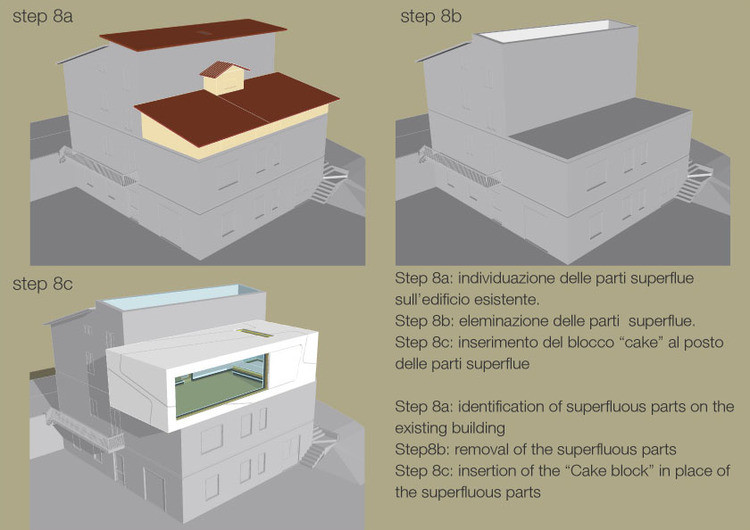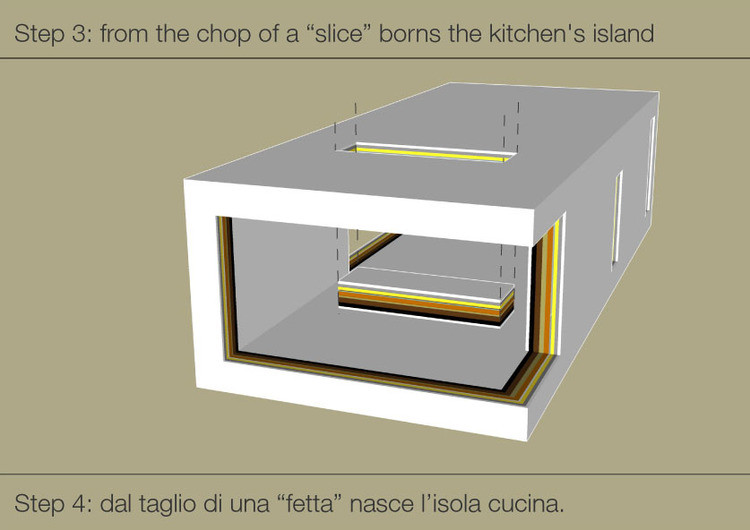The Cake House was completed in 2014 by PROGETTOSPORE in Pistoia, Italy. It represents the result of a successful expansion of a two-family residence, which was originally built between 1950 and 1970. The new, modern abode had to be 20% more spacious when compared to the old one, and the architects decided to expand it on its south-west side, which faces a beautiful garden.
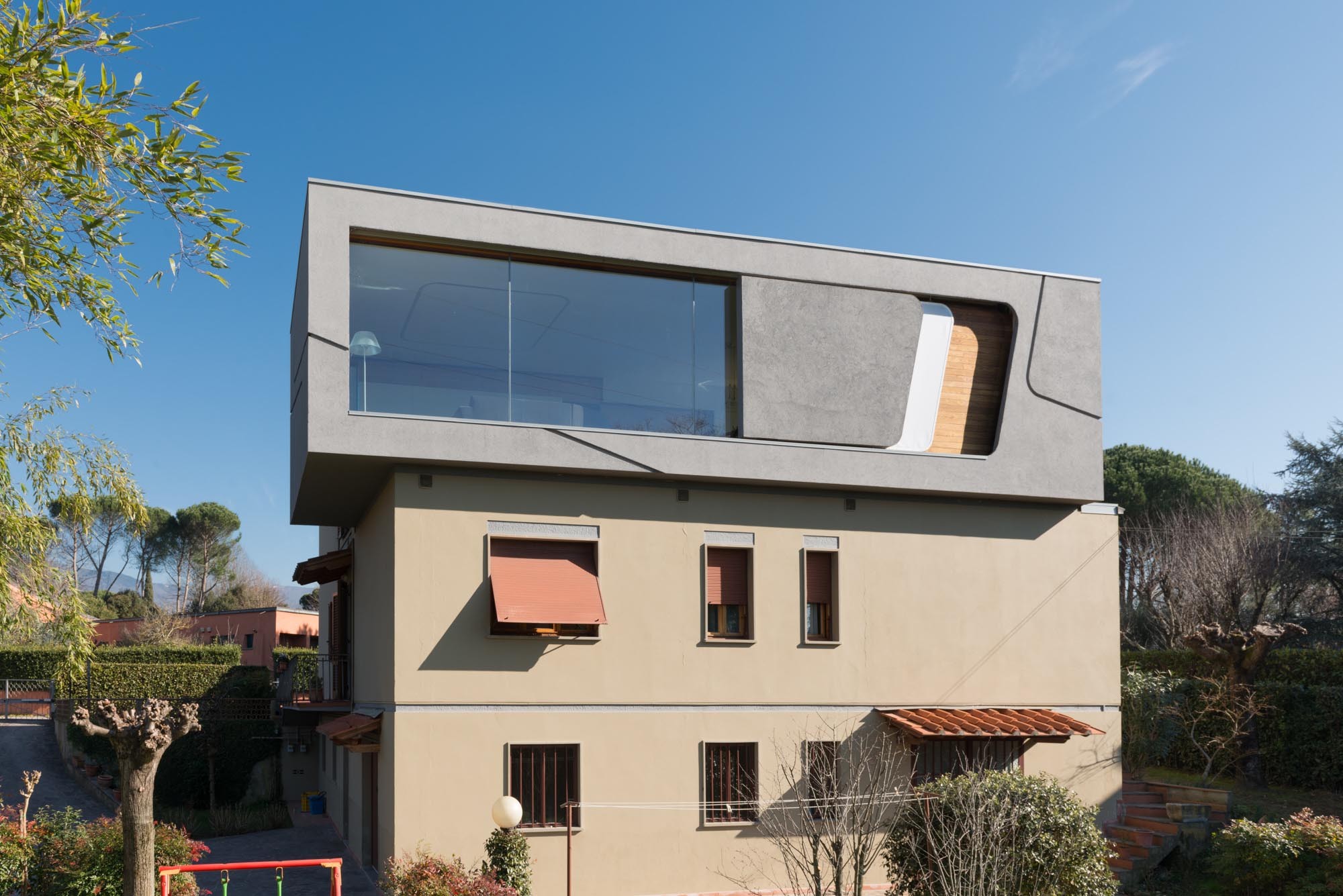
The plan was to offer more living space by adding completely new elements to the original design, but in order to build this new installment, the designers had to remove a part of the existing structure. Dubbed the “Cake” project, the residence’s design follows the rules of PROGETTOSPORE’s Tetracube protocol. The home’s name comes from the numerous colored layers that were inserted throughout its living spaces, whether we’re talking about the kitchen countertops, window frames or skylights.
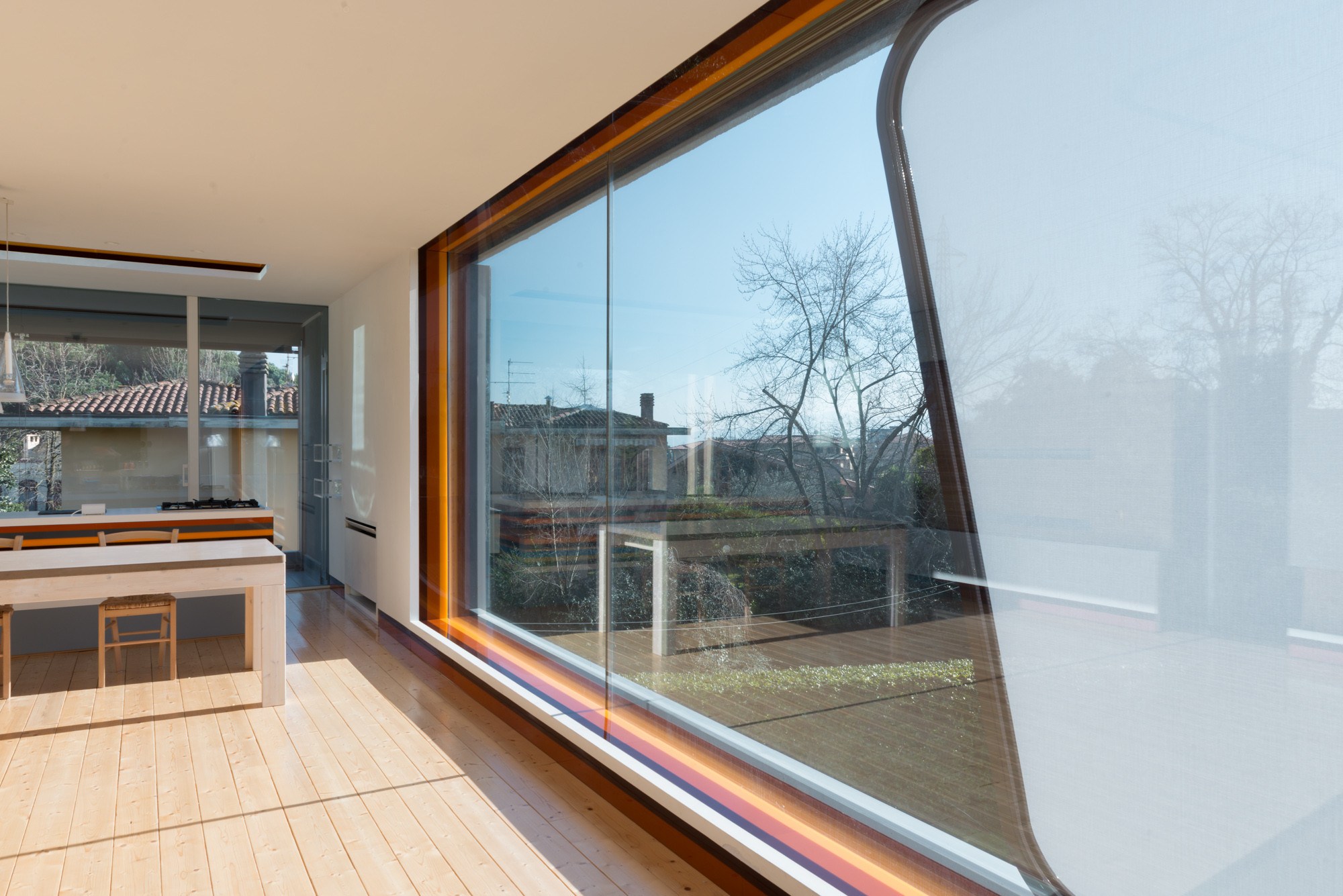
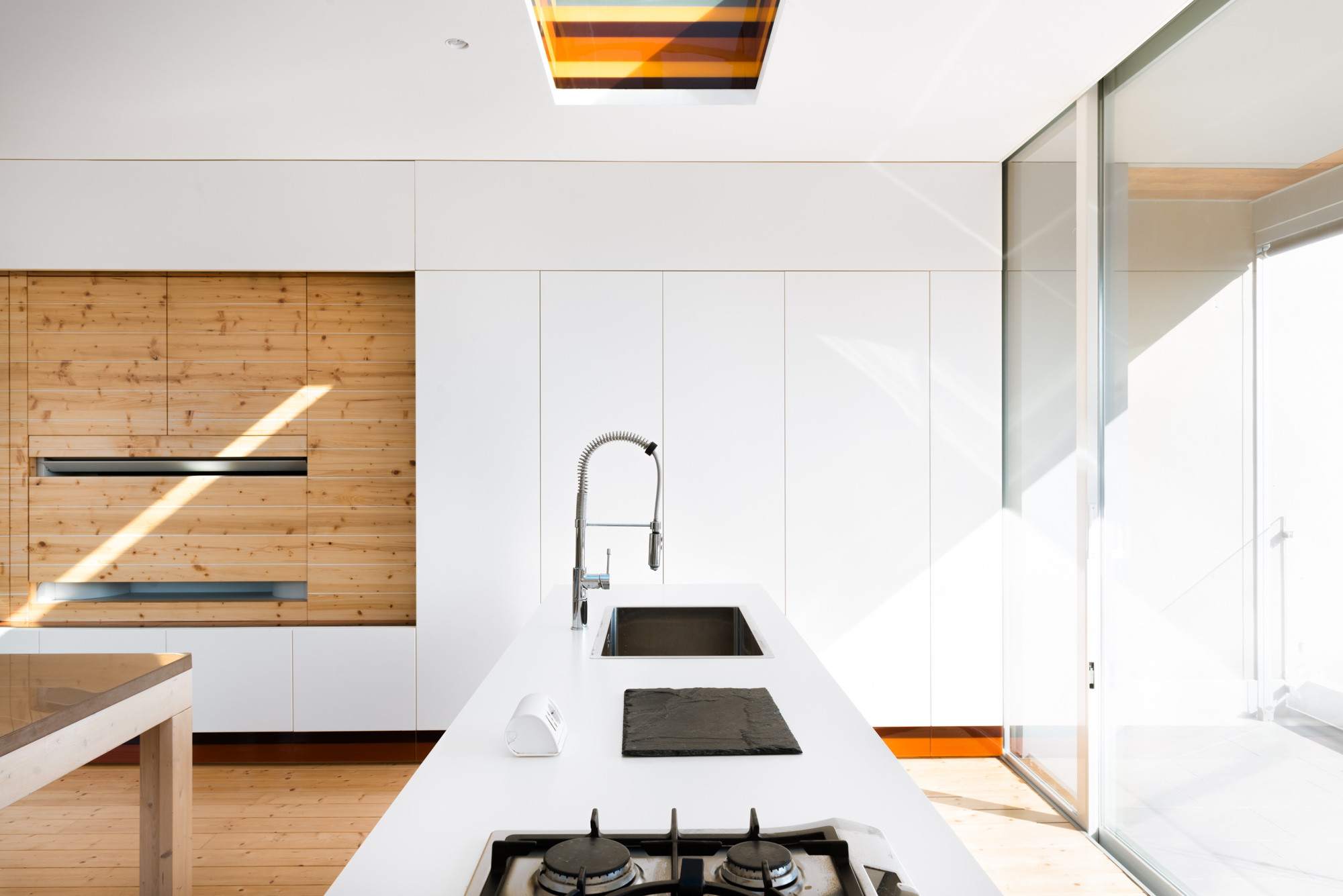
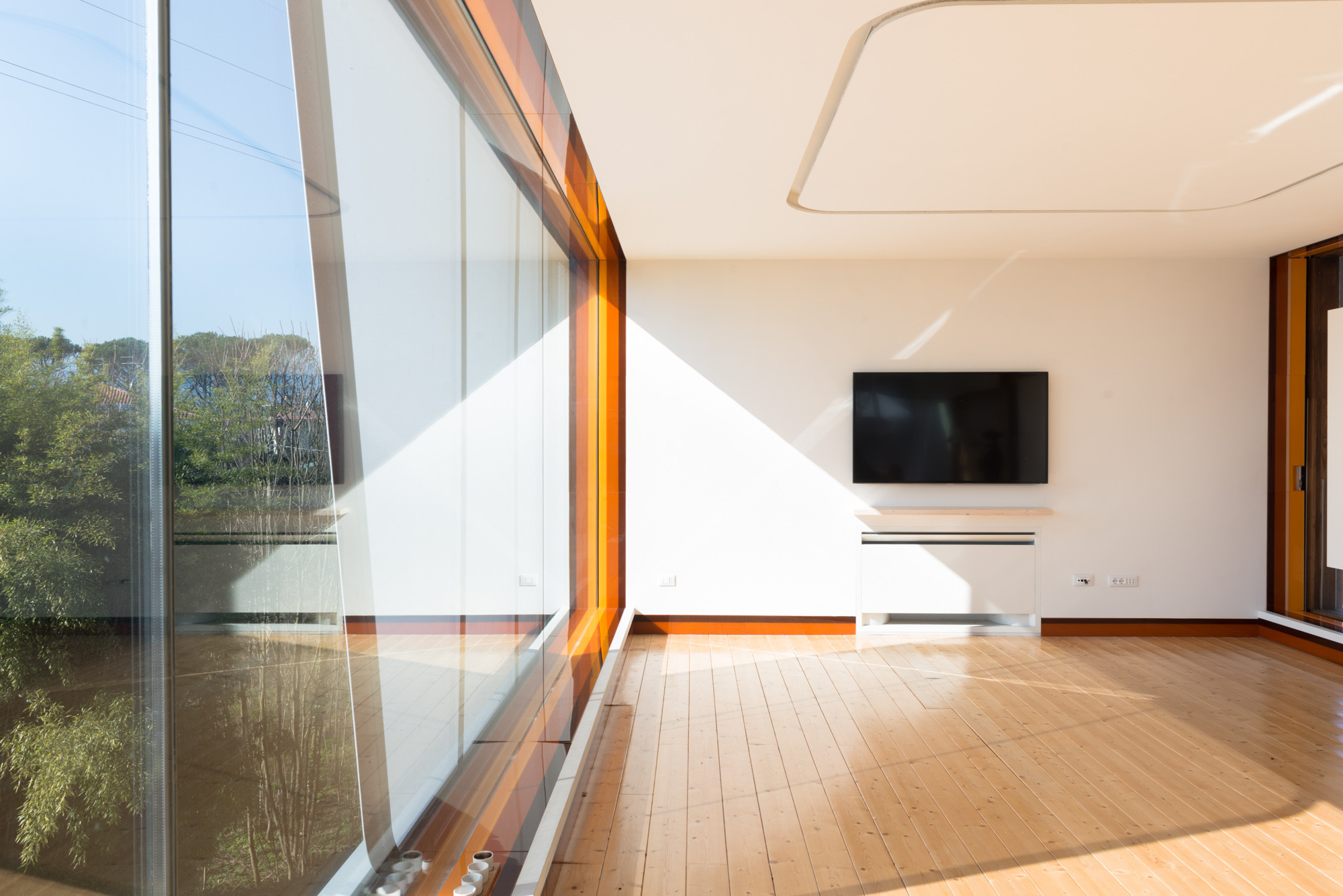
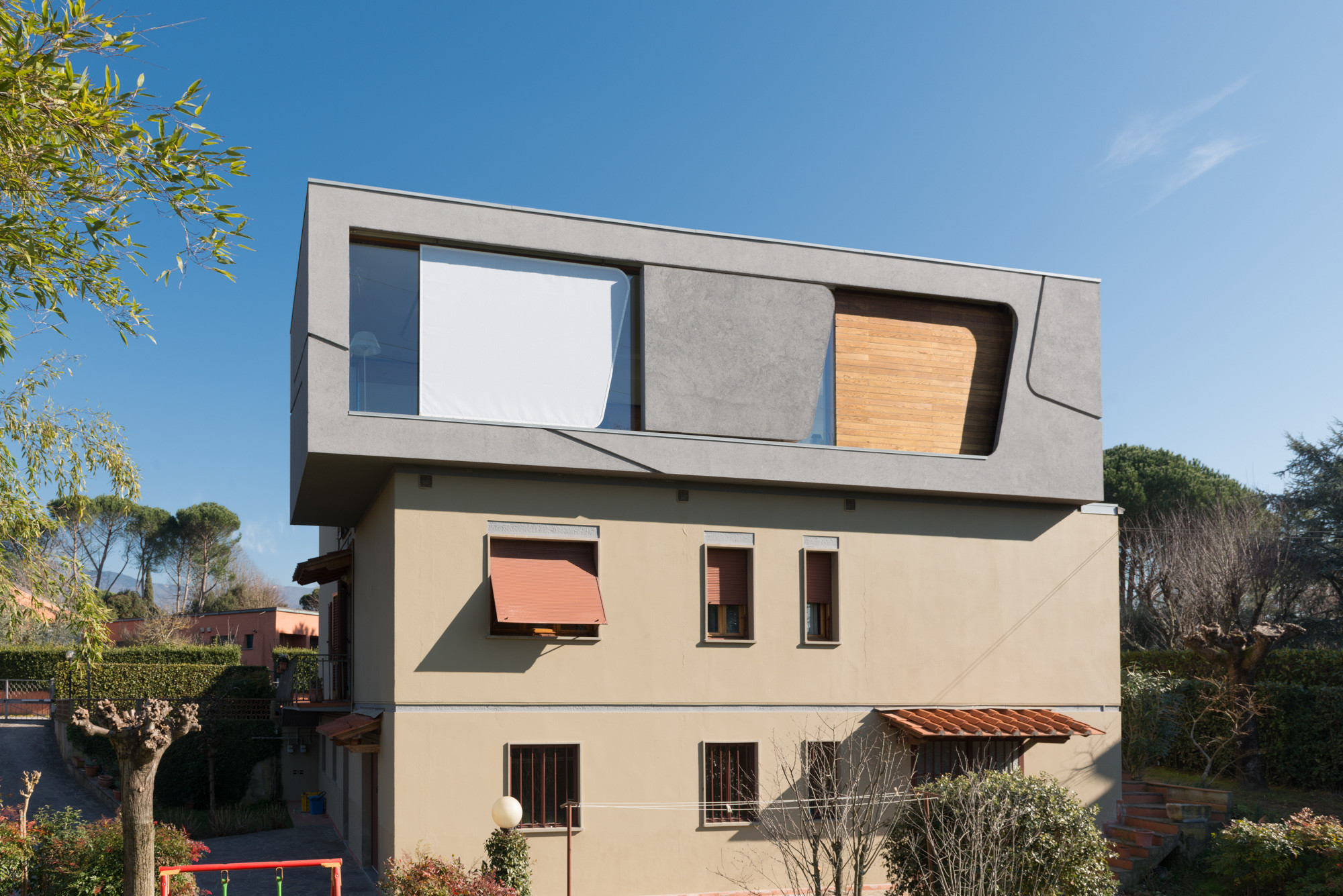
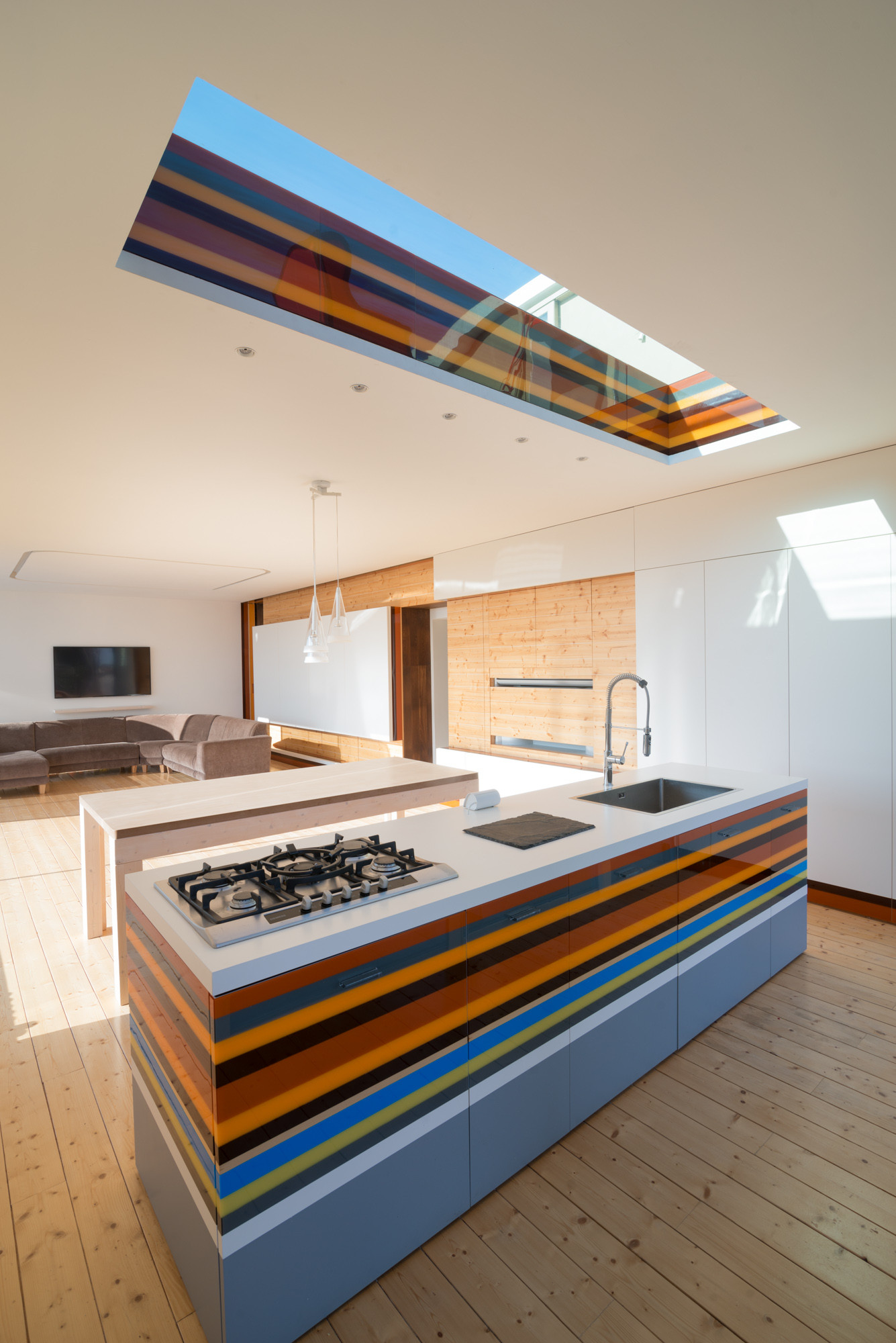
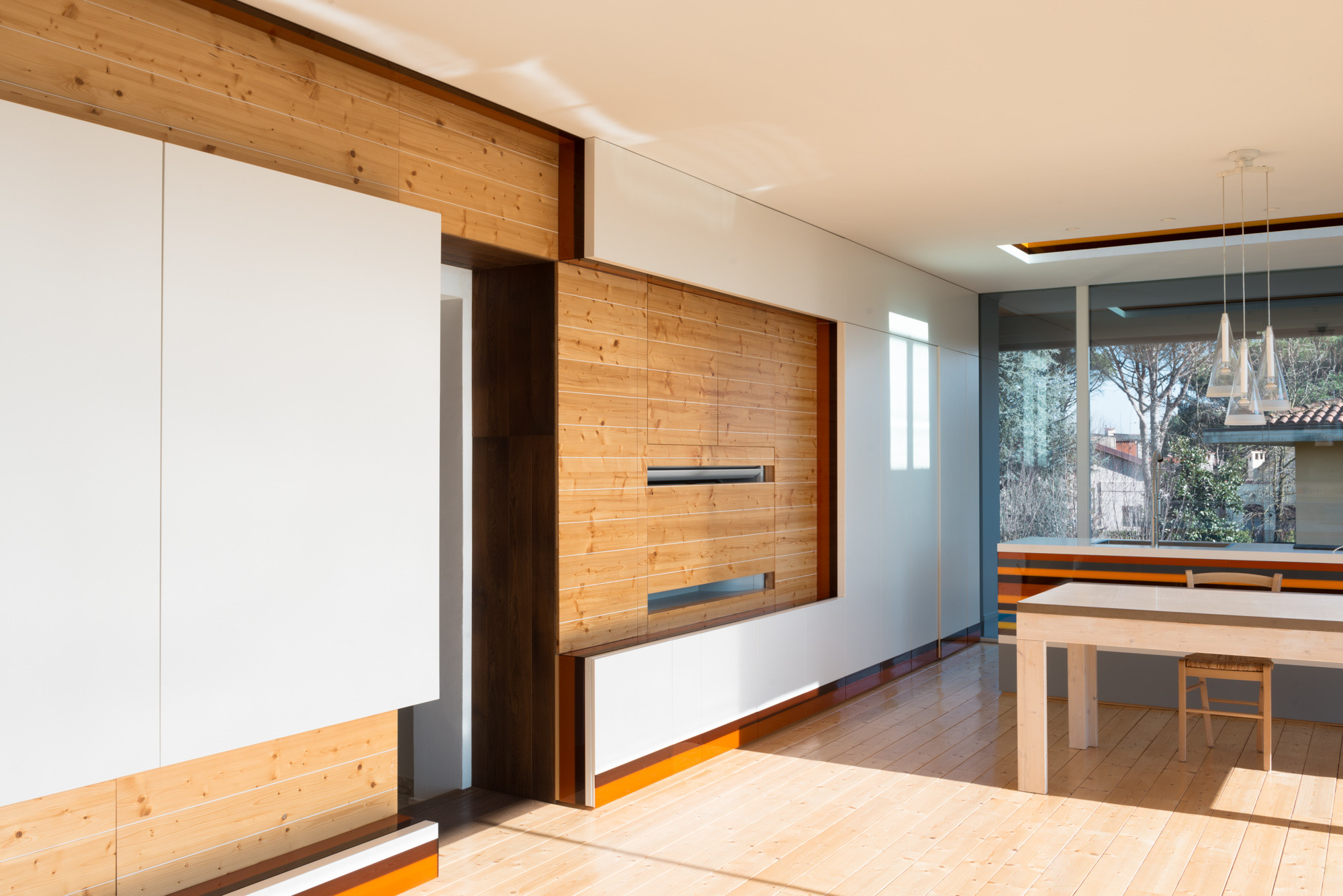
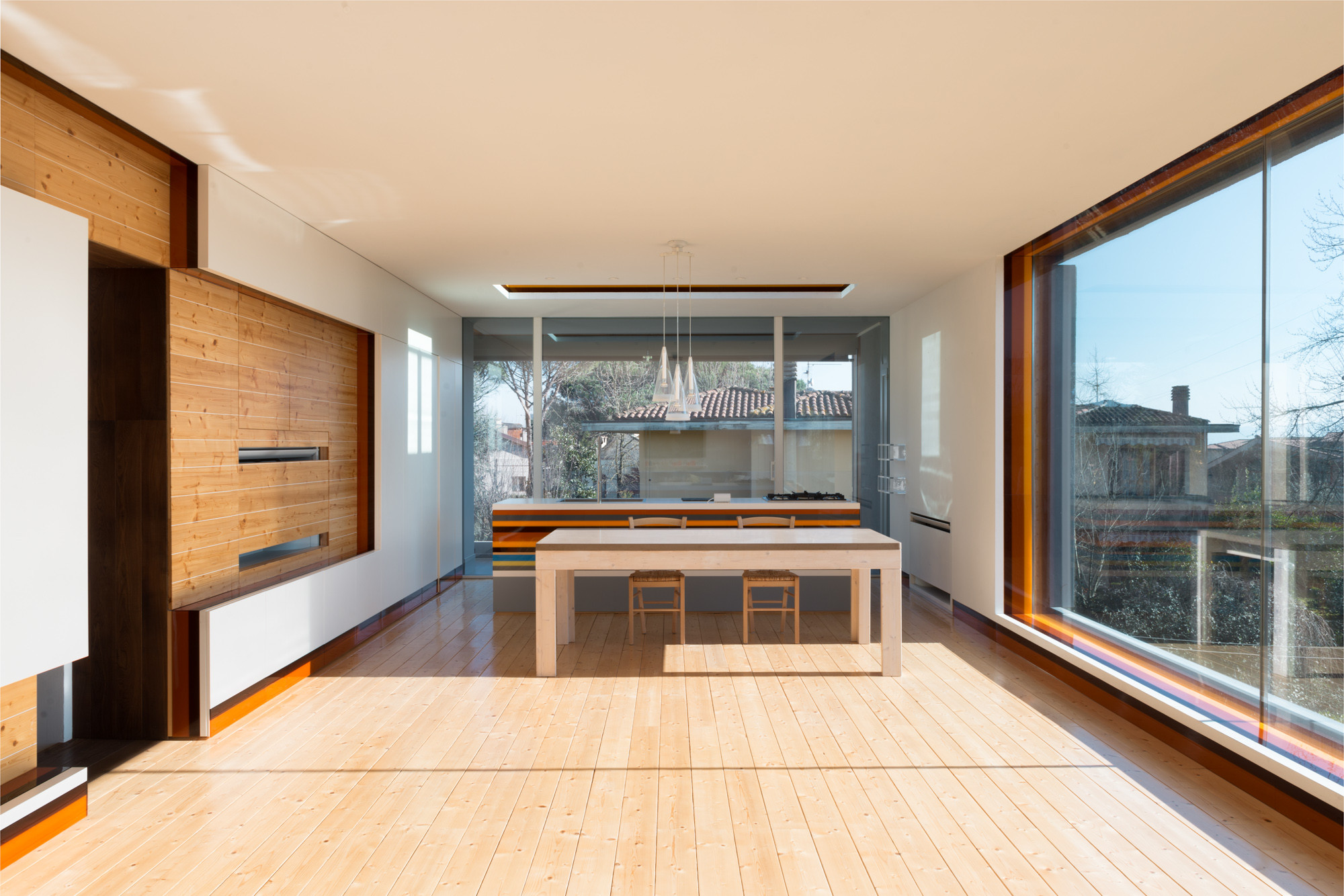
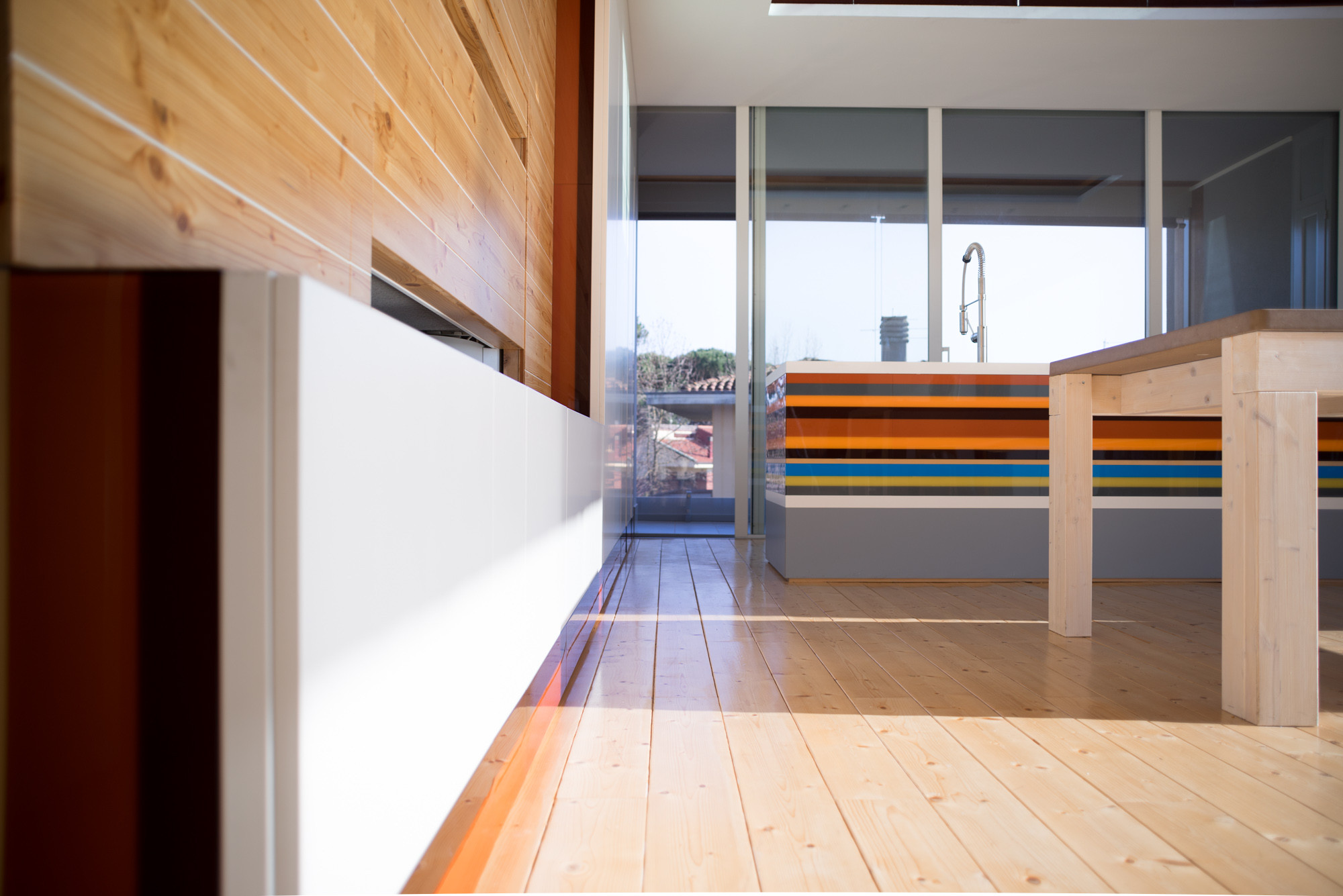
From the architect:
The Cake House is a project for the extension of a two-familiy house.
1 – Analysis and observations:
The existing house is located in a residential area of the town which was built between 1950 and 1970 and is characterized by one or two-family houses with a garden.
The client’s needs were to increase the living space of 20 per cent, without diminishing the garden area. After a preliminary analysis it was decided to act on the south-west side of the house that was facing the garden and it could then offer a new view on the town. From the beginning it was clear that one of the main problems would have been the adjustment to the existing volume of the house because operating on that side of the house would have mean to completely upset the existing balance of it.
2 – The project
We did not simply want to expand or enlarge the existing structure but we rather had the idea that the volume boost should come out of something completely new in relation to the original shape. We then decided that our project would have been based on the aritmetic concept of addiction and subtraction rather than on a simple expansion. A full part of the existing building was removed to obtain the appropriate platform where to build the new installment.
3 – The Cake
The Cake project, as it was called, abide by the rules defined in our Tetracube protocol. We already knew our blueprint would have been a primitive three-dimension graphic to add on the existing volume, but it was not enough. We needed specific rules to shape it. In our various, also fortuitous research, we noticed that some stratified cakes had the structure that we needed: a simple basic shape that can gradually become more complex subctrating parts of it at different dephts.
The amusing part of it and also the most significative one was that the coloured layers could function as a memory mark of what was taken away off the block. Layers are thus the visual link to what was there previously. In this way the final shape can be a way ‘to read’ the initial one. A project with ‘time’ inside.
Following our Tetracube design protocol we started to create different functional shapes trough simple subctractions. By cutting out a small portion in the roof, for example, we realized the kitchen unit. The same procedure was used for the windows shutters even if in this case the subtracted parts weren’t ‘reused’ for a different purpose. Shutters were put on mobile carriages and when they sweep on they show the stratified inner part of the cake, now thus revealed: so basically the shutters are the display of our projectual concept.
- Location: Pistoia PT, Italy
- Project Year: 2014
- Photographs: Riccardo Magherini
